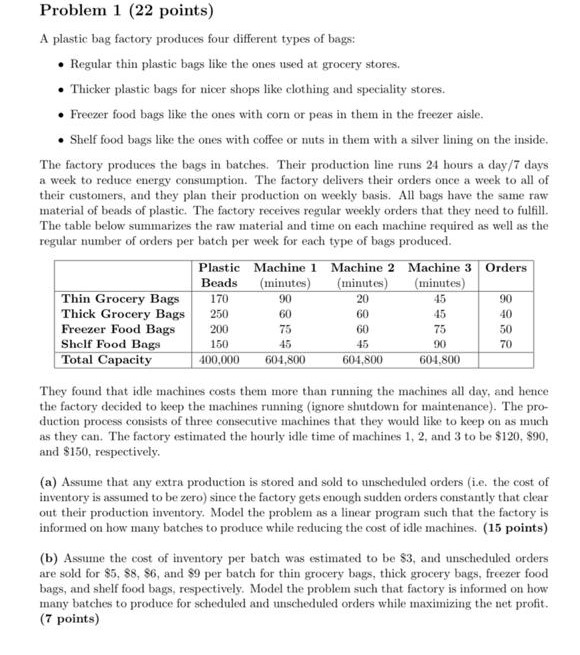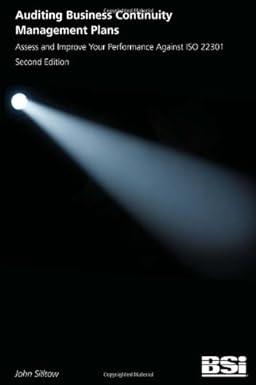
Problem 1 (22 points) A plastic bag factory produces four different types of bags: Regular thin plastic bags like the ones used at grocery stores, Thicker plastic bags for nicer shops like clothing and speciality stores. Freezer food bags like the ones with corn or peas in them in the freezer aisle. Shelf food bags like the ones with coffee or nuits in them with a silver lining on the inside, The factory produces the bags in batches. Their production line runs 24 hours a day/7 days a week to reduce energy consumption. The factory delivers their orders once a week to all of their customers, and they plan their production on weekly basis. All bags have the same raw material of beads of plastic. The factory receives regular weekly orders that they need to fulfill. The table below summarizes the raw material and time on each machine required as well as the regular number of orders per batch per week for each type of bags produced. 20 Thin Grocery Bags Thick Grocery Bags Freezer Food Bags Shelf Food Bags Total Capacity Plastic Machine 1 Machine 2 Machine 3 Orders Beads minutes) (minutes) minutes) 170 90 45 250 60 60 45 200 75 60 150 90 70 400.000 604,800 604,800 6 04.800 75 45 They found that idle machines costs them more than running the machines all day, and hence the factory decided to keep the machines running (ignore shutdown for maintenance). The pro- duction process consists of three consecutive machines that they would like to keep on as much as they can. The factory estimated the hourly idle time of machines 1, 2, and 3 to be $120, S90, and $150, respectively. (a) Assume that any extra production is stored and sold to unscheduled orders (i.e. the cost of inventory is assumed to be vero) since the factory gets enough sudden orders constantly that clear out their production inventory. Model the problem as a linear program such that the factory is informed on how many batches to produce while reducing the cost of idle machines. (15 points) (b) Assume the cost of inventory per batch was estimated to be $3, and unscheduled orders are sold for $5, 88, 86, and $9 per batch for thin grocery bags, thick grocery bags, freezer food bags, and shelf food bags, respectively. Model the problem such that factory is informed on how many batches to produce for scheduled and unscheduled orders while maximizing the net profit, (7 points)







